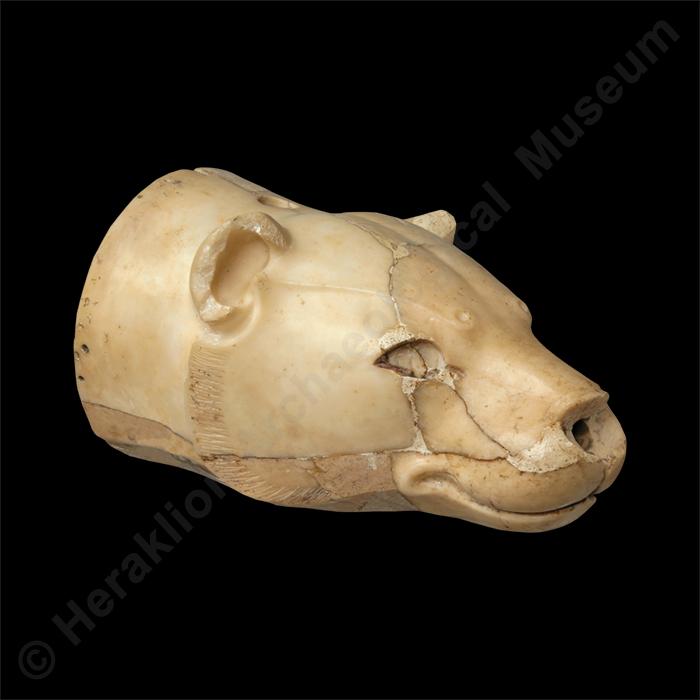Stone lion's-head rhtyon
Λ44
Stone (Limestone)
Mended
Height: 17 cm. Length: 29.5 cm.
Knossos
Palace
Late Bronze Age. Neopalatial period, Late Minoan I period.:
1600 - 1450 BC:
Gallery:
VIIICase:
87Exhibition thematic unit:
Late Bronze Age - Neopalatial period (1700-1450 BC). Minoan religion. Palace cultPalace of Knossos: Stone Cult Vessels
Description
Libation vessel (rhyton) in the shape of a lioness head, made of white, semi-translucent white limestone. An exquisite example of the Minoan stone-carvers’ skill and naturalism. The eyes and muzzle were inlaid. Other parts of the head may also have been inlaid, as the excavator reports that a small fragment of red jasper was preserved at the tip of the lioness’s nose when it was found. The cult vessel has a hole in the back of the neck for pouring the liquid into the vessel, and two holes in the nose and mouth to pour out the libation. It was apparently stored along with other stone vessels, mostly rhyta, in the Room of the Stone Vases in the Central Palace Sanctuary of Knossos or on the floor above. The rhyton was made in Late Minoan I but may also have been used in the next phase of use of the palace.Bibliography:
Dimopoulou-Rethemiotaki, Ν. Το Αρχαιολογικό Μουσείο Ηρακλείου, Athens, 2005, 158-159. Evans, A.J. The Palace of Minos: A Comparative Account of the Successive Stages of the Early Cretan Civilization as Illustrated by the Discoveries at Knossos. Vol. II,2. London, 1928, 820-822, 827-830, figs 537, 542, 543. Karetsou, A., M. Andreadaki-Vlazaki, and N. Papadakis (eds). Κρήτη - Αίγυπτος. Πολιτισμικοί δεσμοί τριών χιλιετιών. Κατάλογος Έκθεσης. Heraklion, 2000, 245, no. 247. Panagiotaki, M. The Central Palace Sanctuary at Knossos. British School at Athens Supplementary Volume 31. London, 1999, 274-275.Author:
E. S.Photographs' metadata
